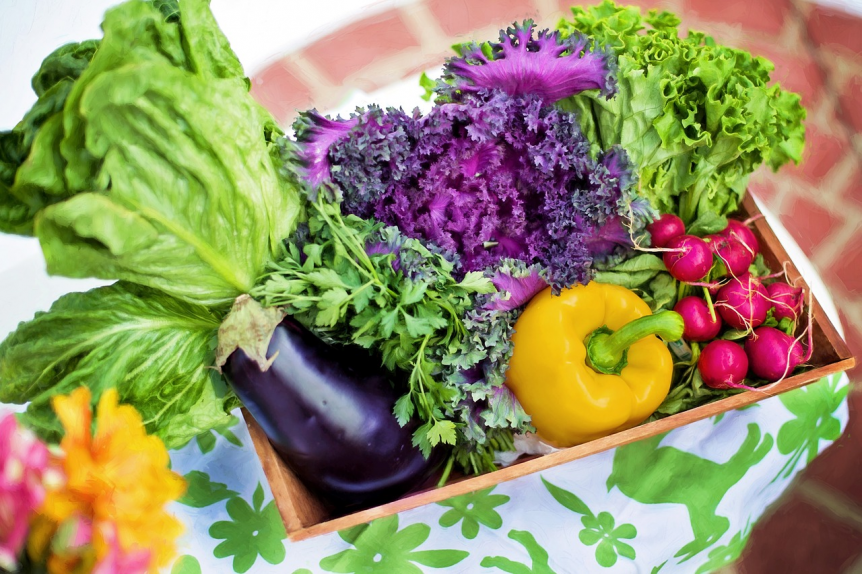Gardening isn’t for the weak-minded. It takes a lot of time, care, and attention to detail if you want to make it grow in a healthy and beautiful manner. That being said, many people take up gardening as a hobby, and with the help of various tools, online resources, and professional help, can successfully turn their backyard into a nature haven.
There are various things to keep in mind when you get to work on your garden. When it comes to regular lawns that consist of plants or trees, Lawn Care Services including mowing, watering, and fertilizing can be sufficient to keep the garden alive and thriving. However, when it comes to vegetable gardens, the maintenance process can be slightly more complicated. You have to make sure you’re planting your veggies in the correct season, using appropriate soil, watering them consistently, protecting them from plant diseases and pests with the help of bug spraying and other insecticides, and hauling heavy gardening supplies – and that’s just the tip of the iceberg!
So much time, love, and care are required that it’s understandable to want to be sure you’re choosing the right plants for your home garden. Doing your research is essential before choosing a plant, simply by the look of it. Consult a gardening expert, read up on some Gardening Tips for the plants you’re interested in, and make sure they are suitable for your region. Above all, be patient and enjoy the process!
Apparently, Romaine lettuce is considered pretty easy to grow. Yet, each kind of romaine has unique gardening needs. In this handy guide, we’ll get to know five species of romaine lettuce so that you can determine which variety is best suited to your home garden.
Parris Island
Named for an island off the coast of South Carolina, this romaine variety is one of the most preferred among backyard gardeners. Plant your Parris Island romaine lettuce seeds 36 inches apart in rows, and give them 1 inch of water once a week. They will grow well in autumn, spring and even winter. Parris Island romaine is slow to bolt, especially in the summer heat, as long as you have enough sunlight to suit their full-sun preference. After about 70 days, the leaves will reach a length of 12 inches, at which point they are ready for harvest. You can also harvest the baby lettuces if you prefer sweeter greens, but even the long, tender adult leaves have a delicate flavor. Or, simply gather the leaves as needed and allow the whole shoot to continue thriving.
Cimarron
Cimarron, also called red romaine for its wine-red outer leaf tips, is another bolt-resistant variety. Though most romaine varieties prefer cool climates, Cimarron is particularly heat-resistant, therefore a hardier option for warmer temperatures. Most often grown in spring, summer and fall, it also demonstrates considerable frost resistance in winter. Plant the moisture-loving seedlings in a mostly sunny, partially-shady area, and water them at least twice a week. Cimarron matures in about 60 days with 10- to 12-inch leaves or earlier as baby greens. Not only does it create a splendid color contrast in salads, but it also adds sweetness and a satisfying crunch.
EZ Serve
As the name suggests, EZ Serve romaine is the least challenging variety to grow. It is suited to all growing zones and thrives in both full sun and partially shady locations. Its round, crispy leaves grow to about 10 inches at the most, maturing after 65 days. Plus, EZ Serve is especially easy to harvest. You simply pluck them at the stem, rinse and serve for a healthy, crunchy snack.
Forellenschluss
Don’t be surprised when your lettuce grows medium green leaves with brown or red splotches. These speckles are not a disease but a beautiful show of the diversity of romaine — hence the name “Forellenschluss” for this Austrian variety, meaning “speckled like trout” in German. The moderately heat-resistant and bolt-resistant Forellenschluss is happy in both sunny and partially shady areas. Water it regularly as it grows to maturity in 50 to 70 days, then harvest the leaves by cutting them at the base. The leaves will grow back repeatedly with regular watering, but they will start to lose flavor over time.
Little Caesar
Little Caesar is the least resistant to heat of all romaine and therefore grows best in cooler climates, cooler seasons like early spring and fall, and shadier areas. Slightly smaller than other varieties, the dainty Little Caesar leaves grow to 8- to 12-inches, reaching maturity at 70 days. The delicate green outer leaves and tender yellow-gold inner leaves combine beautifully in a caesar salad.
____________________________________________________________________________
Home gardening isn’t always easy, but it sure is rewarding. Plus, it doesn’t have to be more complicated than necessary if you start out with a good idea of what will work in your garden. Do you live in a hot climate with lots of sunlight? Cimarron or Parris Island might be your best bets. Or is your region cool and wet? In that case, try growing some Little Caesar or Forellenschluss. If you’re a beginner and unsure where to start, the EZ Serve is calling your name. No matter which variety of romaine lettuce you end up growing, you’ll be able to take pride in your hard work once the dinner plates are bursting with delicious and nutritious fresh garden produce!
- Best learning toys for children as they age - July 19, 2023
- Luxury yacht charter vs. standard yacht charter: Which is right for you? - February 7, 2023
- Comfortable Shoes for Being on Your Feet All Day - January 10, 2023

Like It? Share It!